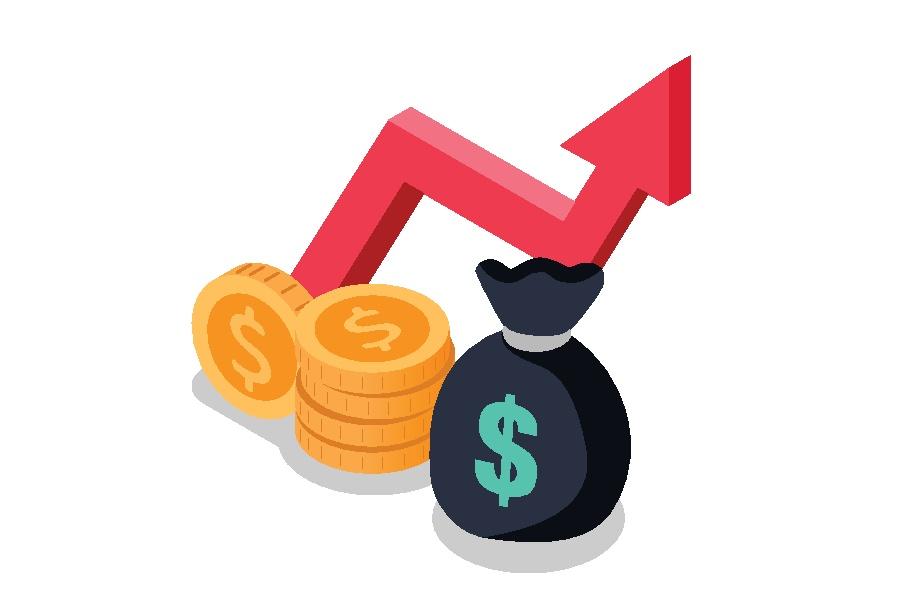The labor market recovered quickly from the massive pandemic induced downturn in early 2020. The labor market regained its pre-pandemic strength within a few short years. Moreover, it stayed strong with low unemployment and rising wages. This stability helped to eventually overcome the onslaught of supply side driven inflation, so that wages outpaced inflation in 2023 again.
Jobs came back with eyepopping speed after the pandemic. Initially, the labor market shrank by 21.9 million jobs in March and April 2020. Thanks to massive government interventions to help people pay their bills and businesses to stay open and keep their employees, hiring started anew in May 2020. Additional government support in early 2021 helped the labor market to maintain its momentum in the face of supply side shocks, higher oil prices and sharply higher interest rates. The hiring boom brought the total number of jobs back to where it was in February 2020 by June 2022 – two years and two months after the pandemic induced recession ended. In comparison, it took more than twice as long – four years and 11 months — after the Great Recession ended in June 2009 to regain all of the jobs lost during that recession. And, job gains have not stopped, so that there were 4.9 million more jobs in December 2023 than in February 2020. The labor market has been consistently strong for several years now.
The quick recovery to a strong labor market and the persistent strength in hiring provided people with a much needed measure of economic stability. The unemployment rate, for instance, stayed at or below four percent for two years – from December 2021 to December 2023. This was the longest period of such low unemployment since the early 1960s. For more than 50 years, workers have not had this many job opportunities.
People who lost their jobs can also find a new one more quickly than was true after the last recession – the Great Recession from 2007 to 2009. The average length of unemployment for all unemployed workers averaged to 20.6 weeks in 2023. The length of unemployment is a volatile measure, so that a 12-month average provides a better sense of the labor market strength or weakness than the monthly data. The most recent 12-month average was well below the 22.9 weeks average for the 12 months ending in February 2020. It was also far below the 39.8 weeks average for unemployed workers during the twelve months ending in February 2012 – the same time after the Great Recession ended as December 2023 was relative to the end of the pandemic related recession. This time around, unemployed workers have a much easier time finding a new job.
Other data suggest that layoffs have been comparatively low during this labor market recovery. In general, layoffs and discharges happen only to a small share of workers. The share of workers that have been laid off or discharged has typically been close to or even below one percent of all workers since March 2021. In comparison, it typically hovered around 1.2% of all workers – or about twenty percent higher – in 2019. In fact, the data, which goes back to 2000, show the rate of layoffs or discharge had never been at or fallen below one percent before the pandemic. Yet, there were seven months in 2023 alone where the rate of layoffs and discharges was at one percent. Workers not only could find employment relatively quickly, they also often ended up in jobs that were more stable than before the pandemic.
During the rapid hiring boom after the pandemic induced recession, employers competed for workers. This gave many workers the opportunity to seek out higher paid opportunities. They either could switch jobs where the pay and benefits were better or they could bargain with their employers for higher wages. This was especially true for people in lower paying industries such as restaurants and hotels. The resulting wage growth helped to rapidly shrink wage inequality.
Higher inflation that followed from massive global supply chain bottlenecks ate into those higher wages for a while. But, starting in February 2023, wage growth once again regularly outpaced inflation. In fact, a larger share of workers – more than 55% — saw positive inflation adjusted wage growth in the second half of 2023 than was the case immediately preceding the pandemic. The labor market stayed strong and delivered for working families, even in the face of supply shocks and high inflation.
Workers often gained higher wages either by asking for a raise or by switching to a higher paying job. Data from the Federal Reserve’s Survey of Household Economics and Decisionmaking show that 20.6% of those working for somebody else asked for a raise or promotion in 2022, the last year, for which data are available. This was the highest share during the six years, for which these data exist. For instance, only 15.8% of wage and salary employees asked for a raise or promotion in 2019, the last year before the pandemic. These numbers suggest that a larger share of workers felt comfortable to push for higher pay in 2022 than in prior years.
Often employers provided higher pay through promotion and raises, even when workers did not ask for them. More than half of workers received a raise or promotion – 53.7% — in 2022. In 2019, a slightly smaller share of wage and salary employees – 49.7% — got a raise or promotion. Presumably employers offered higher pay to most of their workforce in 2022 since they had to compete for talent in a tight labor market.
The labor market regained its strength after the pandemic induced recession fairly quickly and then stayed strong in the face of major headwinds. The labor market recovery is remarkable not only because of the speed at which it happened, but also because of its persistent strength that delivers economic stability to many workers and their families.
Read the full article here










